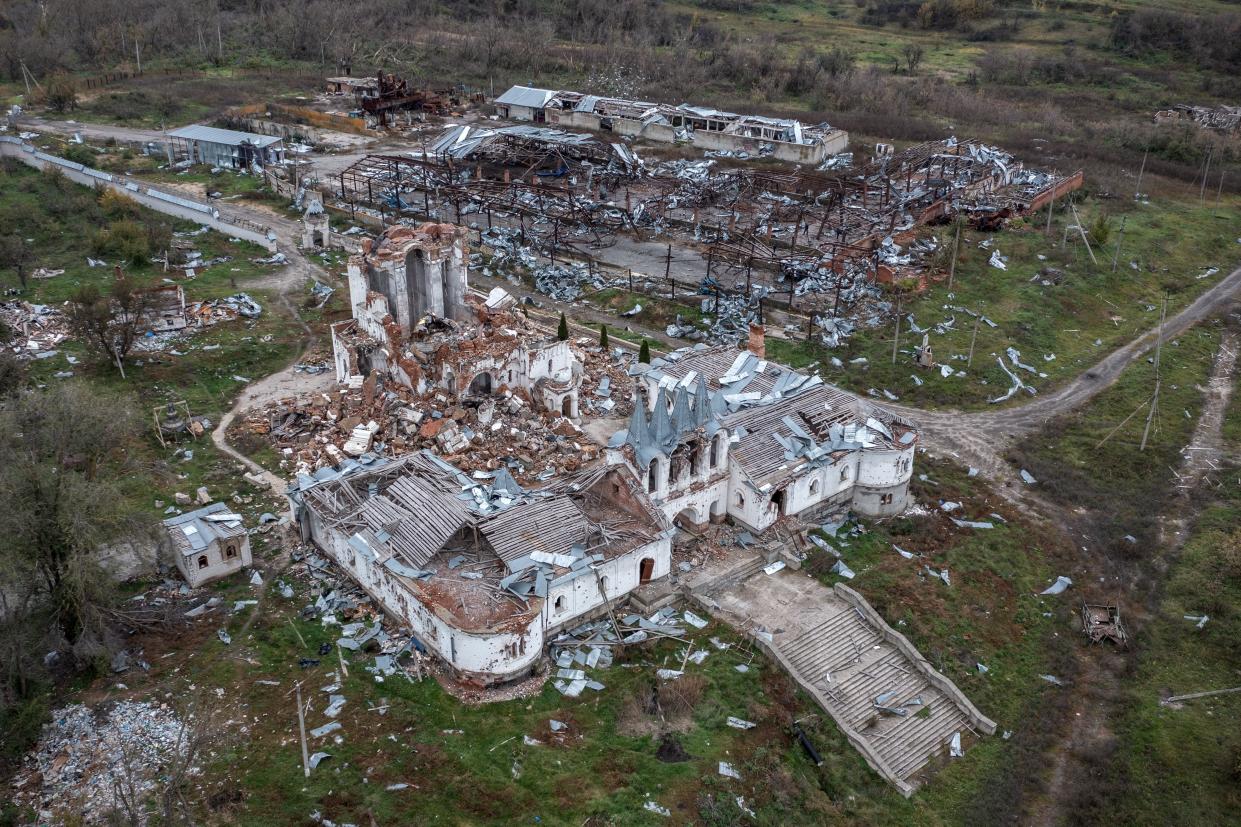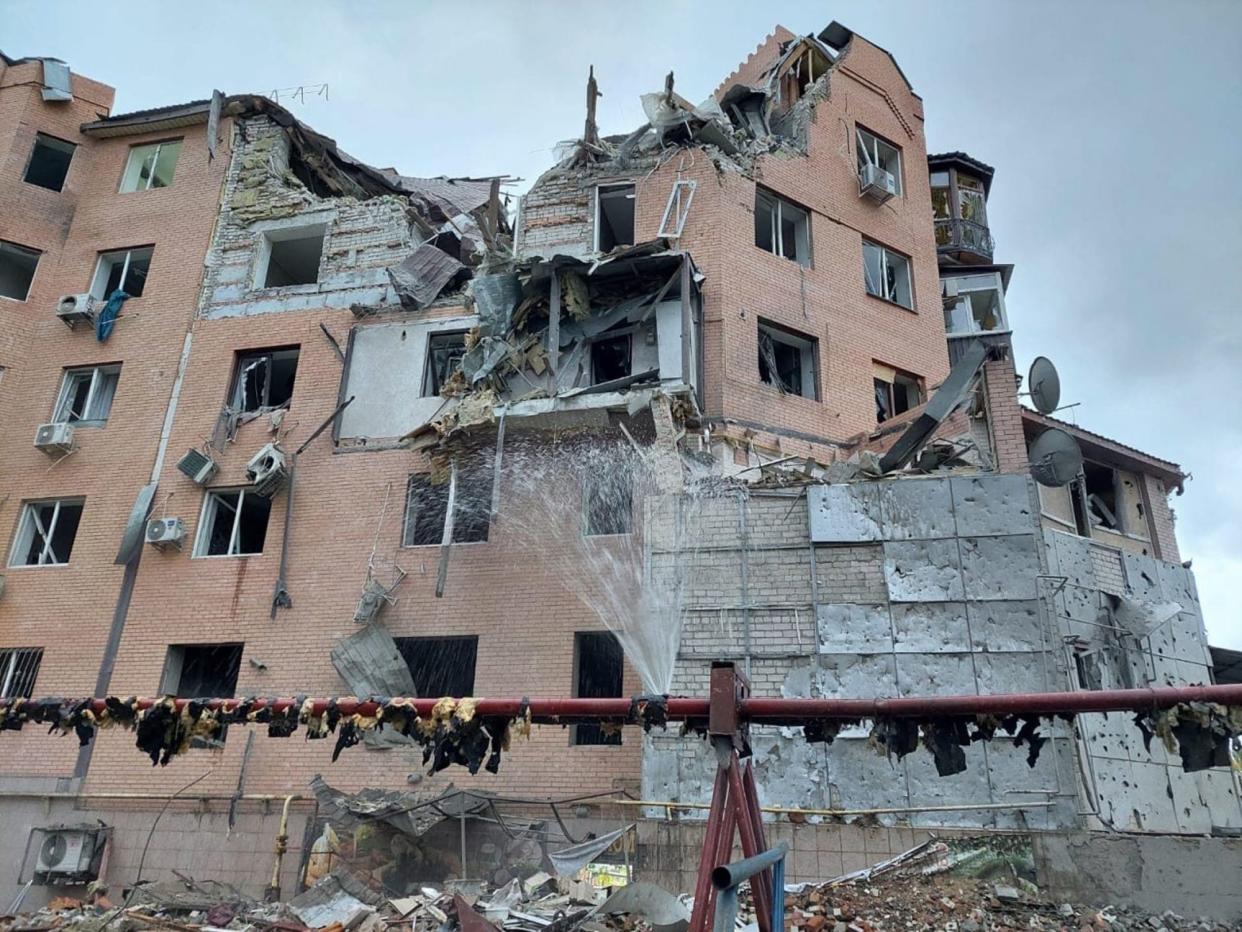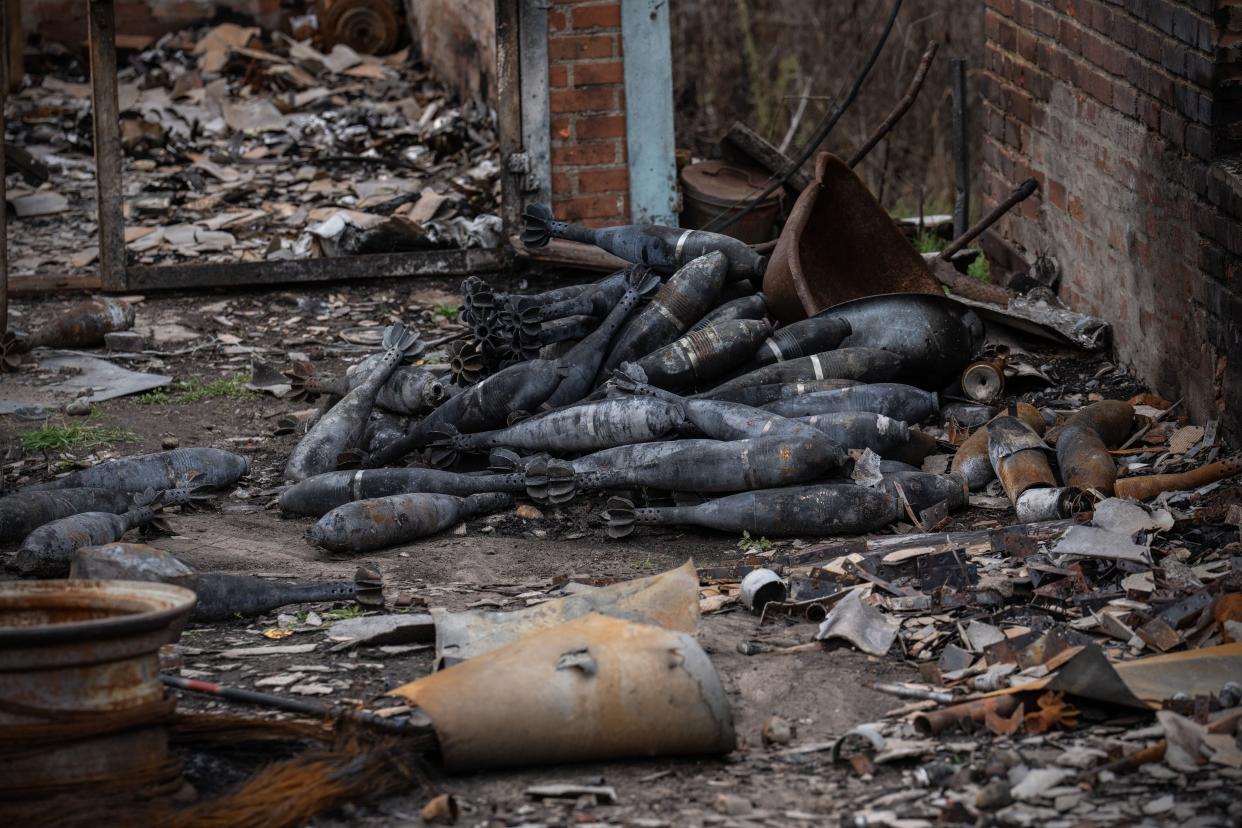Russia goes on defensive as Ukraine beefs up counteroffensive
Russian forces are shoring up defensive positions in occupied areas of Ukraine and along its border, a sign that Moscow is worried about the Ukrainian military expanding its unrelenting counteroffensive to new stretches on the war’s front lines.
Defensive lines have been reinforced in the provinces of Kherson and Luhansk, two of the four Ukrainian regions illegally annexed by Russian President Vladimir Putin and placed under martial law, according to Russian officials.

A monastery and warehouse lie in ruins after being destroyed during fighting between Ukrainian and Russian occupying forces, on October 23, 2022 in Slovyansk, Donetsk oblast, Ukraine. (Carl Court/)
Pyramid-shaped concrete blocks designed to fend off armored vehicles have been built on the Russian side of the border with Ukraine in the Belgorod region, local authorities said, and construction of defensive lines in Russia’s western Kursk region, also on the border, is underway as well.
The defensive reinforcement shows Moscow’s concern over Ukraine’s two-month counteroffensive, expert observers said.
“The project suggests Russia is making a significant effort to prepare defenses in depth behind the current front line, likely to deter any rapid Ukrainian counteroffensives,” the British Defense Ministry said Sunday.
Ukrainian forces have been making advances toward reclaiming Kherson city, which fell under Russian control early in the nearly nine-month-old war.

In this photo posted by the mayor of Mykolaiv on his Telegram channel, a residential building is seen damaged following night shelling in Mykolaiv, Ukraine, Sunday, Oct. 23, 2022.
Residents were fleeing the city by the thousands after Russian local officials said Saturday that they should evacuate by ferry to the east bank of the wide Dnieper River that flows through the southern province.
Ukrainian officials urged Kherson residents, however, to resist the relocation attempts. One local official said Moscow wanted to take civilians hostage and use them as human shields to help thwart an assault.
The Russian military also has withdrawn its officers from the Dnieper’s west bank, leaving behind newly mobilized, inexperienced forces.
Regions across Ukraine were hit over the weekend by more than 100 Russian air and artillery strikes that targeted power stations, water supply systems and other significant infrastructure sites.
The Russian tactic aimed at destroying power plants seems designed to weaken Ukrainians’ will to fight and force the government to devote resources to protecting civilians and infrastructure, said the Institute for the Study of War, a Washington think tank.

Soviet-era 120 millimetre mortars lie on the ground after being charred during fighting between Ukrainian and Russian occupying forces, on October 23, 2022 in Kam'yanka, Kharkiv oblast, Ukraine. (Carl Court/)
It said the strategy was not likely to dim Ukrainian morale but would take a significant economic toll.
Ukraine said its air force downed 18 out of 33 cruise missiles launched by Russia from the air and sea in the infrastructure onslaught, but said almost 1.4 million households lost power.
State energy company Ukrenergo announced rolling blackouts in Kyiv and 10 Ukrainian regions to address the situation.
About a third of Ukraine’s power stations have been destroyed since Russia launched the targeted infrastructure strikes on Oct. 10.
The head of Ukraine’s security service said Sunday it detained the head of a major aircraft engine factory and accused him of colluding with a Russian arms maker to supply Ukrainian-made engines and spare parts to Russian forces.
The president of the Motor Sich plant in Zaporizhzhia and another top factory official are charged with collaboration and “assisting the aggressor state.”
The security service said the accused collaborators and the arms maker set up an elaborate scheme using intermediaries in three countries to evade sanctions against Russia.
Amid an aggressive campaign by Russia to mobilize hundreds of thousands of men into its beleaguered military, meanwhile, two indigenous Siberian men traveled in a small boat across the treacherous Bering Sea to reach Alaska, according to the state’s U.S. Sen. Lisa Murkowski.
The pair landed near Gambell, on Alaska’s St. Lawrence Island, and asked for asylum earlier this month, she said Saturday in Anchorage.
“They feared for their lives because of Russia, who is targeting minority populations, for conscription into service in Ukraine,” Murkowski said.
“It is very clear to me that these individuals were in fear, so much in fear of their own government that they risked their lives and took a 15-foot skiff across those open waters,” said Murkowski, who said she had spoken to the pair.
